
Coquimbo: The Coastal Jewel of Chile
Discover Coquimbo: A coastal haven in Chile, where scenic harbors, historic architecture, and vibrant local culture come together for an unforgettable experience.
Coquimbo is a beautiful port city located in the heart of Chile's Elqui Province. Known for its scenic harbor, bustling markets, and warm, welcoming locals, Coquimbo offers a unique blend of cultural heritage and natural beauty. The city is adorned with striking colonial architecture, while its colorful streets are alive with the sounds of street musicians and the aroma of freshly cooked seafood. One of the highlights of Coquimbo is the Cross of the Third Millennium, a towering structure that offers panoramic views of the city and the Pacific Ocean. This iconic landmark is a testament to the city's rich religious history and provides a serene spot to take in the breathtaking vistas. Nearby, the English Quarter invites visitors to stroll through its charming lanes filled with historical houses, art galleries, and quaint cafes. For those who love the sea, Coquimbo's beaches are a paradise. Playa La Herradura, with its calm waters and golden sands, is perfect for a relaxing day by the sea, while adventurous travelers can explore the vibrant marine life through snorkeling or diving excursions. The city's port is also a gateway to the Humboldt Penguin National Reserve, where you can witness the fascinating wildlife that inhabits this unique ecosystem. Coquimbo's cultural scene is equally vibrant, with numerous festivals and events held throughout the year. The city's markets and restaurants serve up delicious local cuisine, with fresh seafood being a highlight. Whether you're exploring the historic streets, enjoying the natural beauty, or delving into the local culture, Coquimbo promises an unforgettable experience.
Local tips in Coquimbo
- Visit the Cross of the Third Millennium early in the morning or late afternoon to avoid crowds and enjoy the best views.
- Try the fresh seafood at the local markets; it's a local specialty you shouldn't miss.
- Take a day trip to the Humboldt Penguin National Reserve for a unique wildlife experience.
- Explore the English Quarter on foot to fully appreciate its historical charm and artistic vibe.
- Bring a good pair of walking shoes, as the best way to explore Coquimbo is by walking through its picturesque streets.
Coquimbo: The Coastal Jewel of Chile
Coquimbo is a beautiful port city located in the heart of Chile's Elqui Province. Known for its scenic harbor, bustling markets, and warm, welcoming locals, Coquimbo offers a unique blend of cultural heritage and natural beauty. The city is adorned with striking colonial architecture, while its colorful streets are alive with the sounds of street musicians and the aroma of freshly cooked seafood. One of the highlights of Coquimbo is the Cross of the Third Millennium, a towering structure that offers panoramic views of the city and the Pacific Ocean. This iconic landmark is a testament to the city's rich religious history and provides a serene spot to take in the breathtaking vistas. Nearby, the English Quarter invites visitors to stroll through its charming lanes filled with historical houses, art galleries, and quaint cafes. For those who love the sea, Coquimbo's beaches are a paradise. Playa La Herradura, with its calm waters and golden sands, is perfect for a relaxing day by the sea, while adventurous travelers can explore the vibrant marine life through snorkeling or diving excursions. The city's port is also a gateway to the Humboldt Penguin National Reserve, where you can witness the fascinating wildlife that inhabits this unique ecosystem. Coquimbo's cultural scene is equally vibrant, with numerous festivals and events held throughout the year. The city's markets and restaurants serve up delicious local cuisine, with fresh seafood being a highlight. Whether you're exploring the historic streets, enjoying the natural beauty, or delving into the local culture, Coquimbo promises an unforgettable experience.
When is the best time to go to Coquimbo?
Iconic landmarks you can’t miss
Faro Monumental
Explore Faro Monumental, the iconic lighthouse of La Serena, a historical gem with stunning views and vibrant coastal charm.
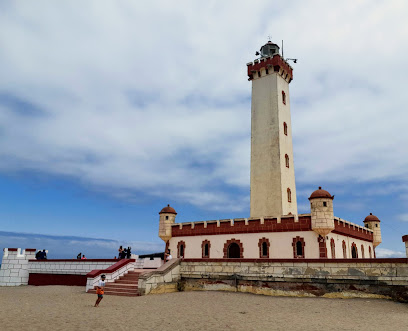
La Recova
Discover the vibrant La Recova market in La Serena, where local flavors, artisan crafts, and cultural experiences await every traveler.
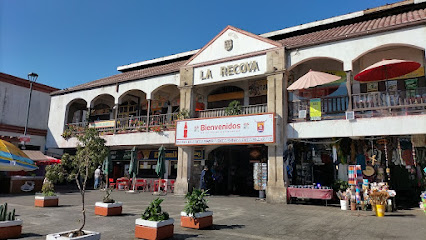
Cruz Del Tercer Milenio
Discover the stunning Cruz Del Tercer Milenio in Coquimbo, Chile—a monumental symbol of faith and hope with breathtaking views and rich history.
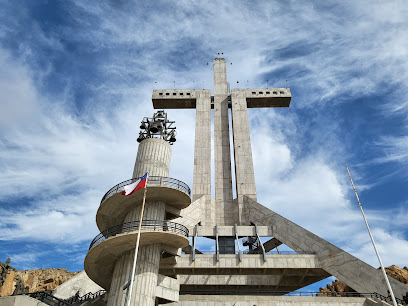
Japonés La Serena Garden
Explore the serene beauty of Jardín Japonés La Serena, a tranquil garden that showcases traditional Japanese design and a peaceful atmosphere in the heart of Chile.

Fuerte de Coquimbo
Discover the captivating Fuerte de Coquimbo, a historic fort offering stunning ocean views and a glimpse into Chile's rich maritime heritage.
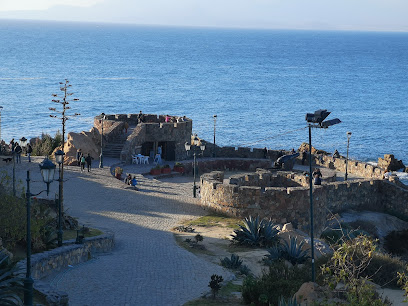
Plaza de Armas Coquimbo
Experience the vibrant culture and scenic beauty at Plaza de Armas Coquimbo, the city's lively heart and a must-visit tourist attraction.

PUEBLITO PEÑUELAS
Experience the vibrant culture and craftsmanship of Chile at Pueblito Peñuelas, a delightful handicraft market in Coquimbo.

Parque Nacional Fray Jorge
Experience the unique ecosystems and breathtaking landscapes of Parque Nacional Fray Jorge, a must-visit national park in Coquimbo, Chile.
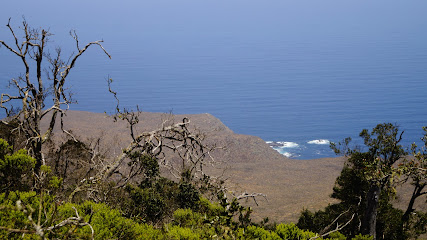
Centro Cultural Mohamed VI
Explore the beauty and cultural significance of the Centro Cultural Mohamed VI in Coquimbo, a unique mosque and tourist attraction that celebrates diversity.
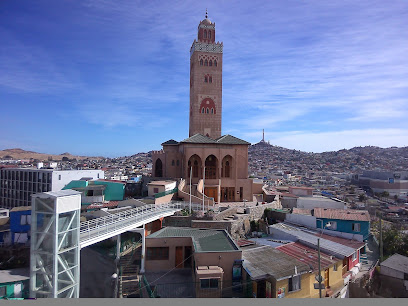
Peñuelas
Discover the beauty of Peñuelas Beach in Coquimbo, where golden sands meet crystal-clear waters, creating an unforgettable coastal getaway in Chile.

Playa La Herradura
Experience the serene beauty of Playa La Herradura, a captivating beach in Coquimbo, Chile, perfect for relaxation, adventure, and culinary delights.
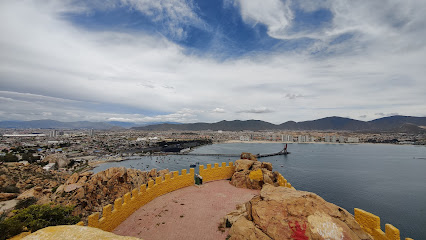
Mirador Los Navegantes
Experience stunning coastal views and serene landscapes at Mirador Los Navegantes in Coquimbo, a must-visit destination for all travelers.
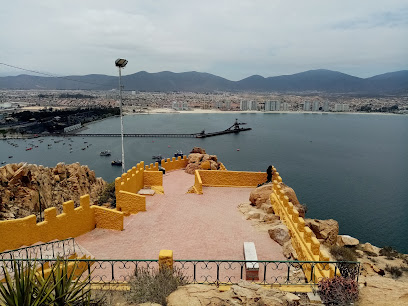
Pichasca Natural Monument
Explore Pichasca Natural Monument: A Nature Lover's Paradise in Coquimbo, Chile, with Scenic Trails and Rich Biodiversity.
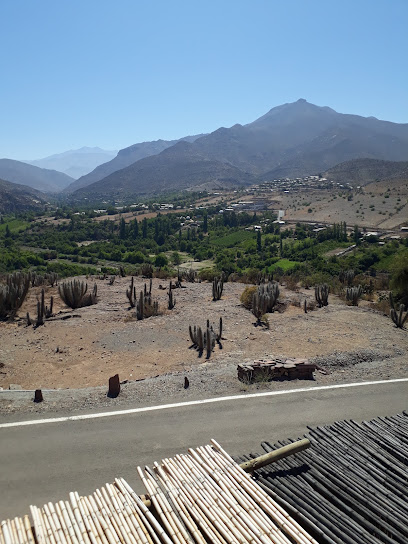
Plaza Nobel Gabriela Mistral
Discover the peaceful oasis of Plaza Nobel Gabriela Mistral in La Serena, where nature meets culture in a stunning city park.
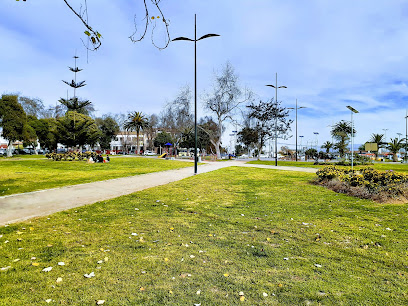
Muelle Morgan
Experience the serene charm of Muelle Morgan in Coquimbo, where breathtaking ocean views and local culture come together for an unforgettable visit.

Unmissable attractions to see
La Recova
Explore La Recova in La Serena for an unforgettable market experience filled with local flavors and unique crafts that capture Chilean culture.
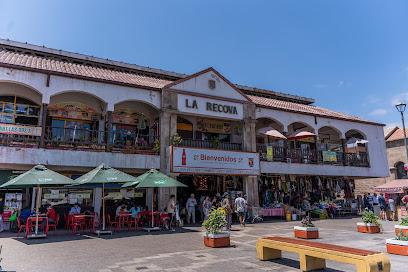
Cruz Del Tercer Milenio
Discover the majestic Cruz Del Tercer Milenio in Coquimbo, a stunning monument with breathtaking views and rich cultural significance.
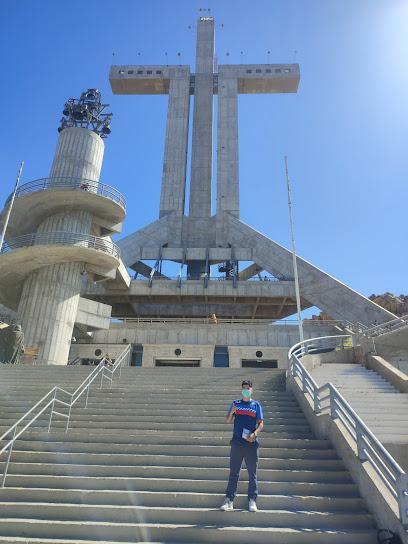
Japonés La Serena Garden
Explore the captivating beauty of Japonés La Serena Garden, a serene retreat in La Serena, Chile, featuring stunning Japanese landscaping and tranquil water features.
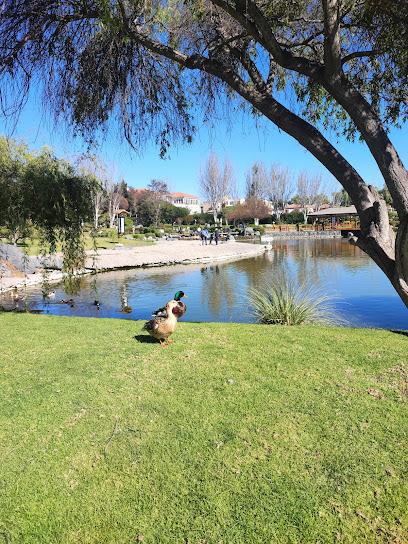
Totoralillo
Discover the serene beauty of Totoralillo Beach in Coquimbo, Chile, a perfect destination for relaxation and adventure by the ocean.

Plaza de Armas Coquimbo
Explore the lush landscapes and vibrant culture at Plaza de Armas Coquimbo, a tranquil city park perfect for leisurely strolls and cultural experiences.
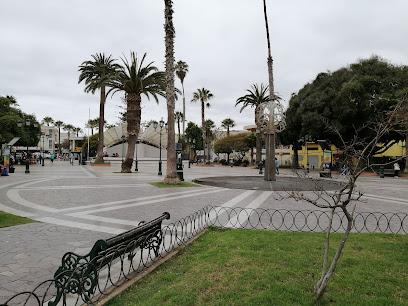
Playa El Faro
Discover the beauty of Playa El Faro, a stunning beach in La Serena, where golden sands meet vibrant culture and unforgettable sunsets.
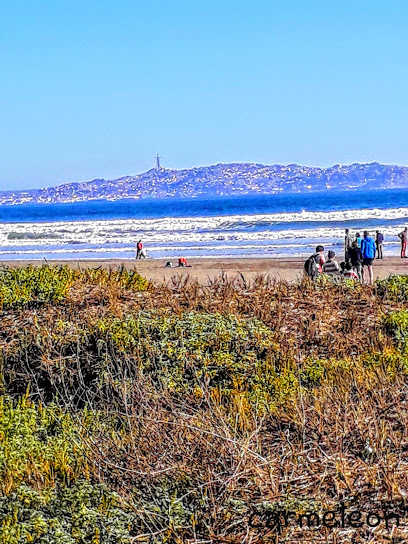
Puerto de Coquimbo
Explore the vibrant Puerto de Coquimbo, a coastal gem offering stunning views, rich maritime history, and delicious local seafood experiences.
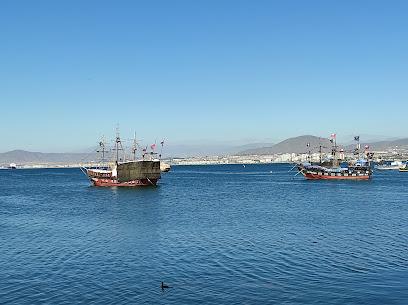
Archaeological Museum of La Serena
Uncover the ancient wonders of Chile at the Archaeological Museum of La Serena, where history and culture intertwine in a captivating setting.
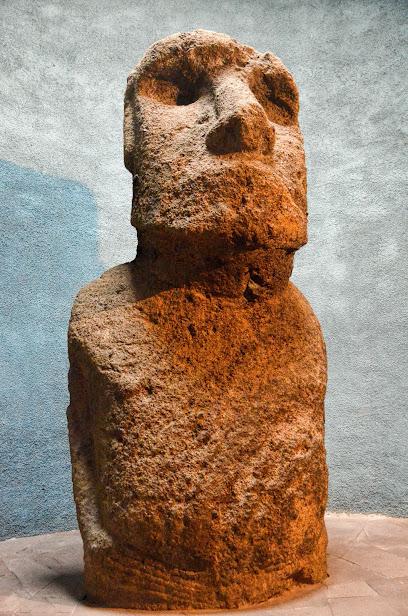
Centro Cultural Mohamed VI
Explore the rich cultural heritage of Coquimbo at Centro Cultural Mohamed VI, a vibrant center of art, history, and spirituality.
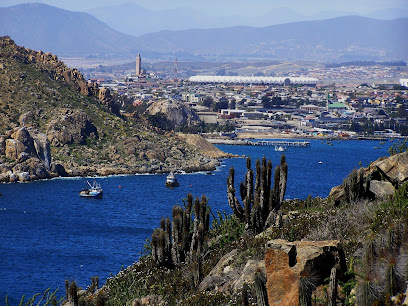
Catedral de La Serena
Explore the stunning Catedral de La Serena, a historical Catholic cathedral rich in architecture and spirituality, located in the picturesque city of La Serena, Chile.
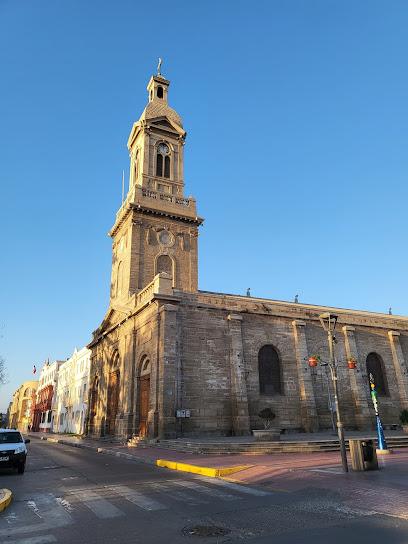
Iglesia de Guayacán (Iglesia del Inmaculado Corazón de Maria)
Explore the architectural beauty and spiritual serenity of Iglesia de Guayacán in Coquimbo, Chile, a must-see destination for every traveler.
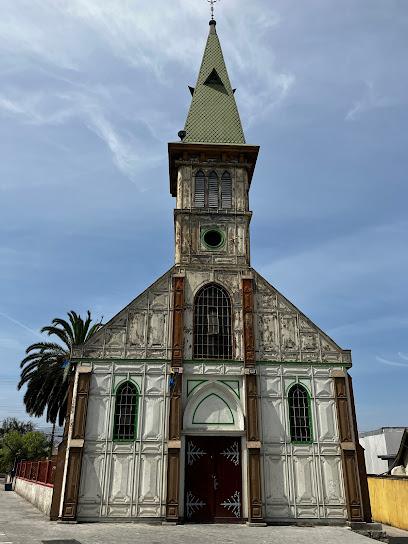
Coquimbo (Letras corpóreas)
Explore the vibrant Letras Corpóreas in Coquimbo, Chile, where art meets coastal beauty in a picturesque setting perfect for memorable moments.
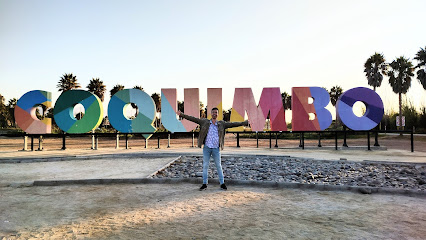
Museo al Aire Libre de la Avenida Francisco de Aguirre
Explore the unique Museo al Aire Libre on Avenida Francisco de Aguirre in La Serena, where stunning sculptures and art installations come alive in a beautiful outdoor setting.

Mirador
Experience breathtaking views and serene landscapes at Mirador in Coquimbo, the perfect spot for nature lovers and photographers alike.
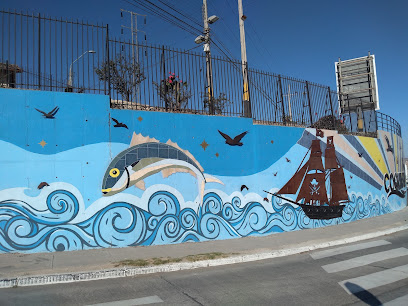
Av. del Mar
Discover the stunning beaches, vibrant atmosphere, and rich culture along Av. del Mar in La Serena, Coquimbo, a perfect getaway for every traveler.
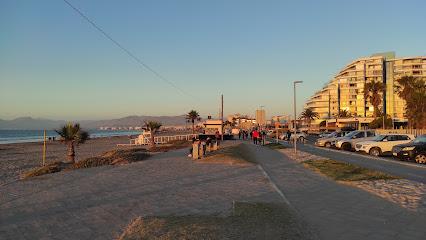
Essential places to dine
Mar Adentro restaurant
Experience coastal Chilean cuisine at Mar Adentro Restaurant in Coquimbo - where fresh seafood meets stunning ocean views.
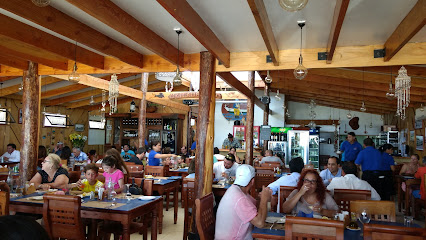
Tío Coco
Experience exquisite seafood and breathtaking ocean views at Tío Coco in Coquimbo – a culinary haven for every traveler.
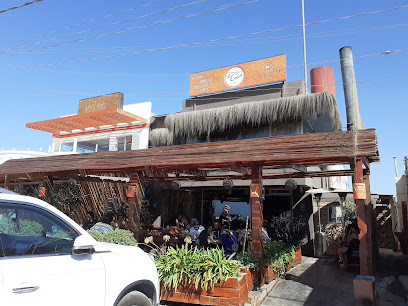
La Picá del Lupa
Experience the vibrant flavors of Chilean cuisine at La Picá del Lupa, Coquimbo's favorite spot for fresh seafood and local delights.

Fogon del Mar Peñuelas Coquimbo
Experience the best of coastal Chilean cuisine at Fogon del Mar Peñuelas with fresh seafood dishes and local flavors.
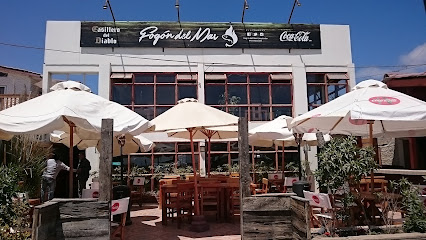
Restaurant Magnolia
Experience exquisite dining at Restaurant Magnolia in Coquimbo - where fresh seafood meets stunning ocean views.
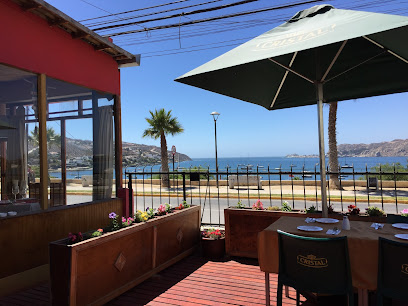
Rincón de Jenny
Discover authentic Chilean flavors at Rincón de Jenny in Coquimbo – where every meal is a celebration of local cuisine.
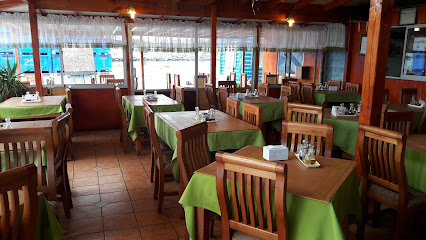
Restaurant Mar y Fuego Coquimbo
Discover authentic Chilean flavors at Restaurant Mar y Fuego in Coquimbo—where fresh seafood meets stunning ocean views.
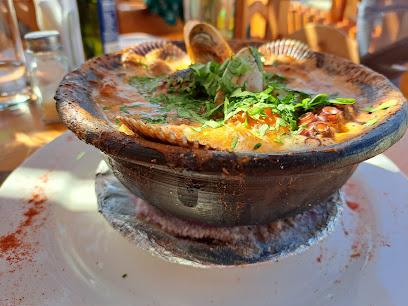
Santabrasa
Discover Santabrasa: A premier coastal restaurant in Coquimbo offering exquisite local cuisine and stunning ocean views.
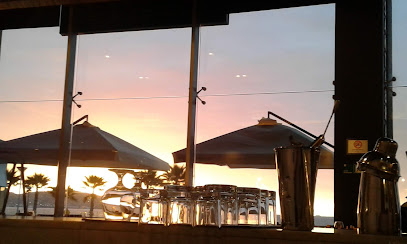
La Caverna de Jhonny
Experience authentic Chilean cuisine at La Caverna de Jhonny in Coquimbo - where tradition meets flavor in every bite.
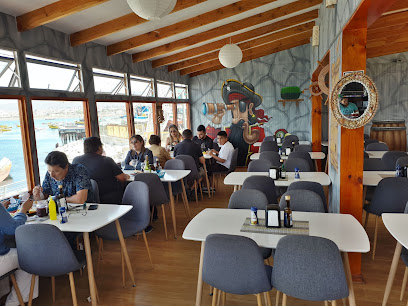
La Terraza De La Mamy
Experience authentic Chilean cuisine at La Terraza De La Mamy in Coquimbo, where local flavors meet stunning coastal views.
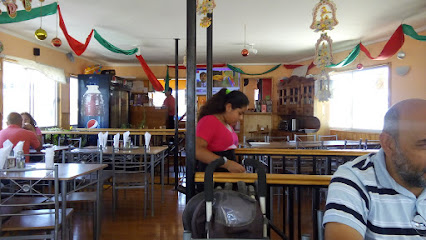
Romántico Viajero Food Truck
Discover the vibrant culinary scene at Romántico Viajero Food Truck in Coquimbo, where local flavors meet international delights on wheels.

RESTAURANT LA LOLY
Experience authentic Chilean cuisine at Restaurant La Loly in Coquimbo - where local flavors come alive in a cozy setting.
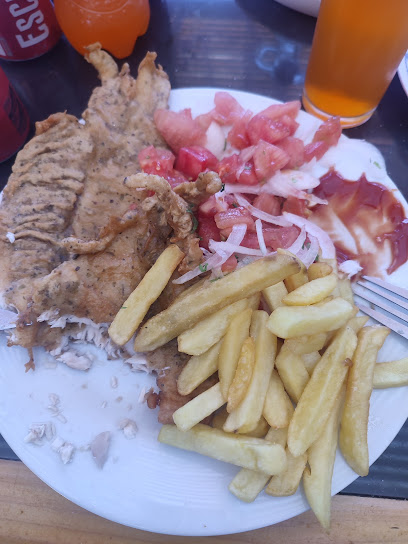
Restaurant Doña Susan
Experience authentic Chilean cuisine at Restaurant Doña Susan in Coquimbo – where family-friendly dining meets stunning coastal views.
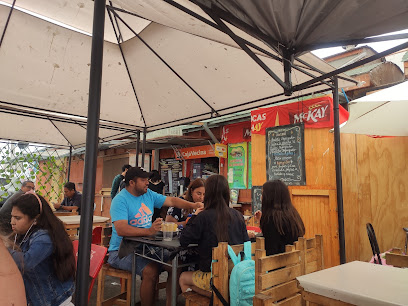
Donde amanda 2.2 Restaurante
Experience family-friendly dining at Donde Amanda in Coquimbo, where local flavors meet warm hospitality.
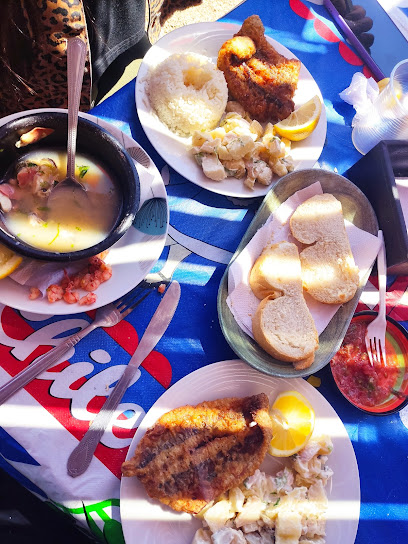
La barra de Coquimbo
Discover La Barra de Coquimbo, where fresh seafood meets breathtaking ocean views in a family-friendly atmosphere perfect for tourists.
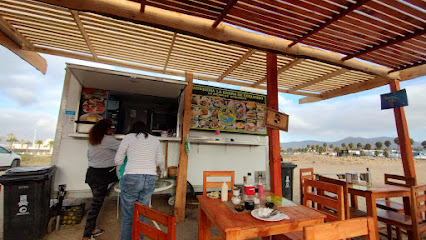
Markets, malls and hidden boutiques
Mallplaza La Serena
Discover the ultimate shopping and dining experience at Mallplaza La Serena, where retail therapy meets entertainment in Coquimbo.
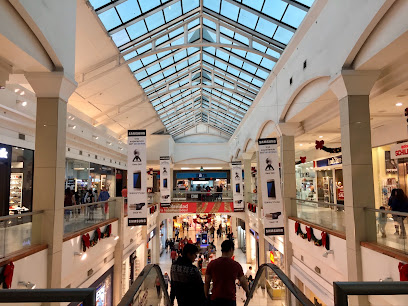
VIVO Mall Coquimbo
Explore VIVO Mall Coquimbo, the ultimate outlet shopping destination featuring diverse stores, delicious dining options, and a vibrant atmosphere in Coquimbo.

Patio Outlet Peñuelas
Patio Outlet Peñuelas: Your ultimate shopping destination in Coquimbo, Chile, featuring unbeatable prices and a vibrant atmosphere.
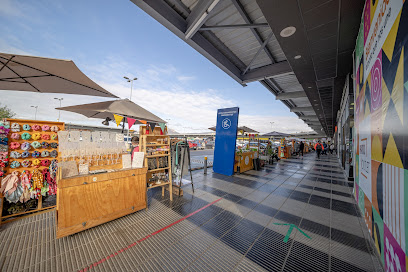
Centro Comercial Paseo Balmaceda
Discover the vibrant shopping experience at Centro Comercial Paseo Balmaceda, where fashion, food, and fun meet in La Serena, Coquimbo.
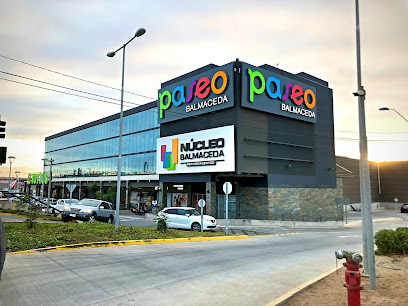
Arauco Premium Outlet Coquimbo
Experience exceptional shopping at Arauco Premium Outlet Coquimbo, where style meets savings in a vibrant setting.
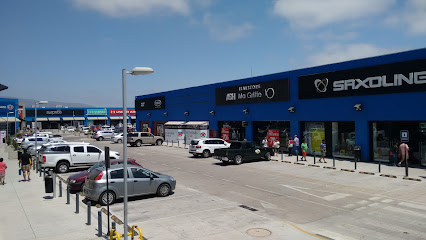
PUEBLITO PEÑUELAS
Explore Pueblito Peñuelas, Coquimbo's vibrant handicraft market filled with unique souvenirs and a taste of authentic Chilean culture.
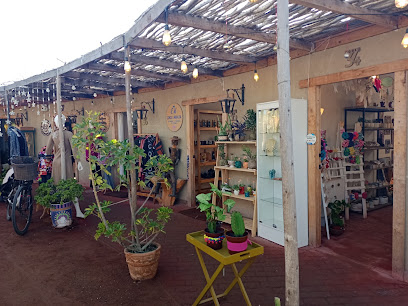
Serena East Mall
Explore the Serena East Mall: La Serena's premier shopping and dining destination, offering a delightful blend of local culture and modern retail experiences.
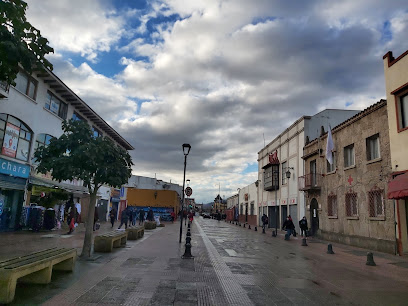
H&M
Explore Coquimbo's H&M: Stylish and affordable clothing for the whole family, embracing the latest fashion trends with a commitment to sustainability.
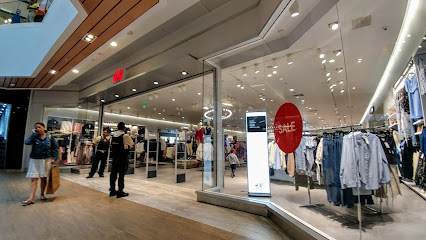
Coquimbo
Discover Coquimbo's vibrant shopping mall offering diverse stores, local cuisine, and cultural experiences in a lively coastal setting.
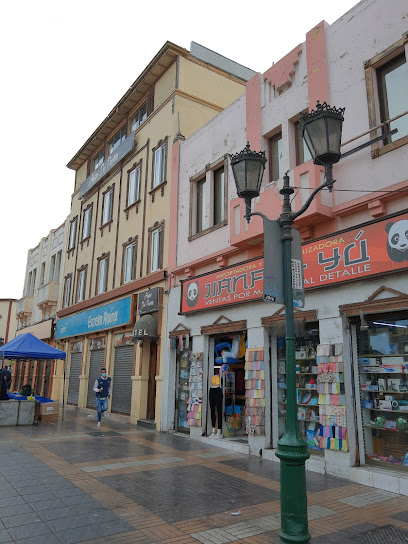
Centro Comercial Caracol Colonial
Discover the vibrant shopping scene at Centro Comercial Caracol Colonial in La Serena, where retail therapy meets local culture and entertainment.
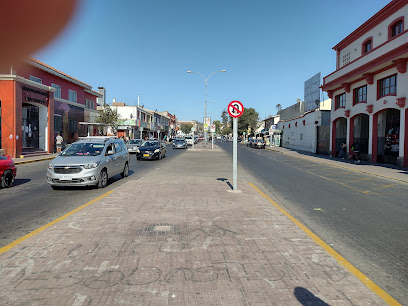
Alistore Las Compañias La Serena
Discover Alistore Las Compañias in La Serena: Your ultimate shopping destination for a blend of local charm and modern retail experiences.
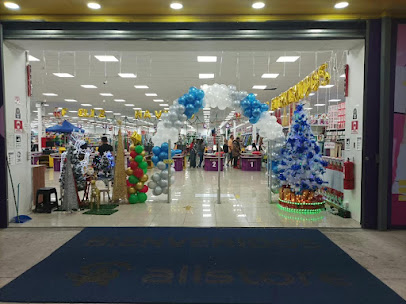
Bold Mall Vivo Coquimbo
Explore Bold Mall Vivo Coquimbo for a stylish shopping experience with diverse clothing and fashion accessories for all ages.
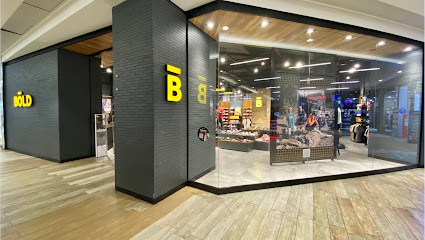
Sede Club Deportes Coquimbo Unido
Experience the vibrant culture of Chilean football at Sede Club Deportes Coquimbo Unido, a must-visit destination for sports enthusiasts in Coquimbo.
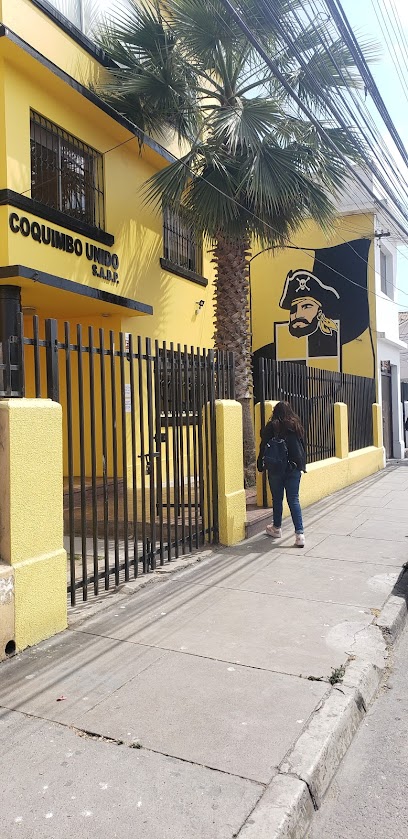
GrafiShop
Experience creativity at GrafiShop: Your go-to destination in Coquimbo for custom t-shirts, digital prints, and graphic design expertise.
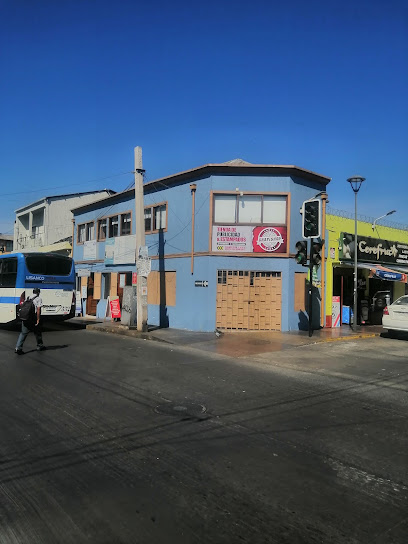
Paris Coquimbo
Explore Paris Coquimbo, a delightful home goods store in Coquimbo, Chile, offering unique decor, kitchenware, and gifts that reflect local culture.

Essential bars & hidden hideouts
New Pirats
Experience the vibrant flavors of Coquimbo at New Pirats, a restaurant and pub offering delicious local cuisine and a lively atmosphere.
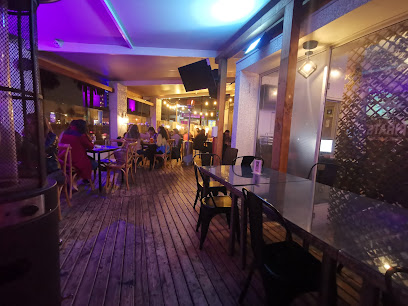
Pub-Restaurant Duna
Experience the vibrant flavors of Chilean cuisine at Pub-Restaurant Duna, Coquimbo's beloved grill destination, perfect for a night out.
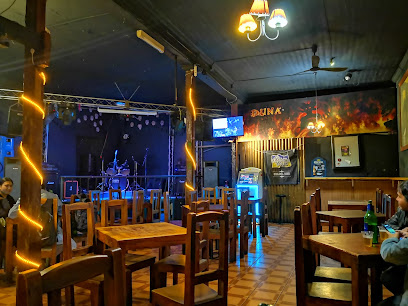
Pub Playa Paraíso
Discover the vibrant nightlife and delightful cuisine at Pub Playa Paraíso, La Serena's premier bar and dance restaurant, where every visit is an unforgettable experience.
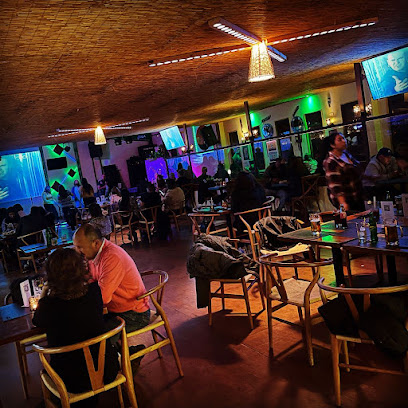
BlueMoon Chile
Discover the vibrant flavors and nightlife at BlueMoon Chile, a must-visit gastropub in Coquimbo for food lovers and entertainment seekers.
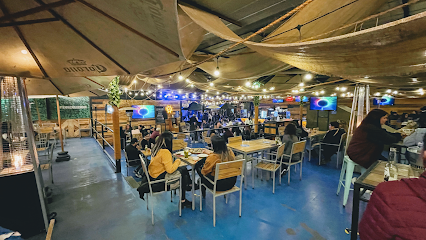
El Viejo Bar Ingles
Experience the vibrant nightlife of Coquimbo at El Viejo Bar Ingles, where delicious gastropub dishes meet energetic dance vibes.

Z garden Bar
Discover Z Garden Bar, Coquimbo's hotspot for grilled delights and electrifying nightlife, where great food meets a vibrant dance atmosphere.
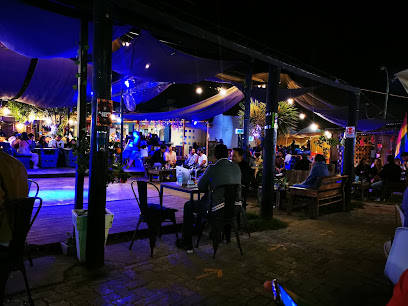
El Bufon
Experience the vibrant nightlife at El Bufon, Coquimbo's favorite karaoke bar, where music and laughter create unforgettable memories.
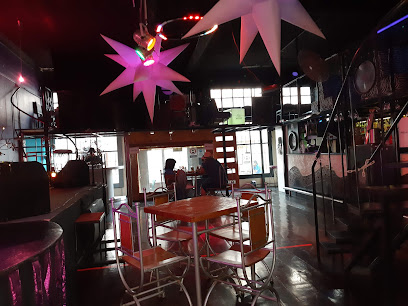
DarkBox RestoBar Pub Discoteque
Discover Coquimbo's nightlife at DarkBox RestoBar Pub Discoteque, a lively bar and dance club offering delicious food and unforgettable entertainment.
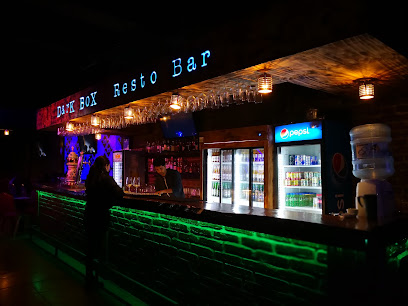
Mi Bar Coquimbo
Discover the vibrant atmosphere and exquisite flavors at Mi Bar Coquimbo, a top gastropub in the heart of Chile's coastal culture.
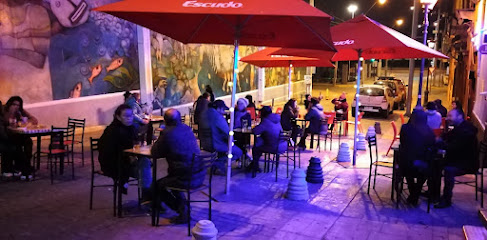
Bar Gas
Discover Coquimbo's nightlife at Bar Gas, where affordable drinks and a friendly atmosphere await every traveler.
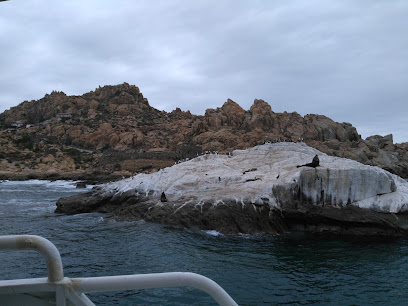
Pub La Barra Bohemia
Immerse yourself in the lively atmosphere of Pub La Barra Bohemia, where local flavors and vibrant nightlife await in the heart of Coquimbo.
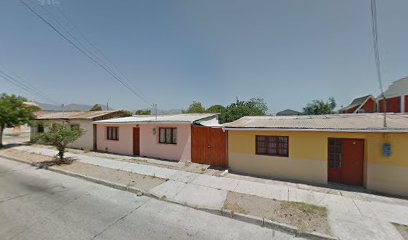
Atlantis Resto-Pub
Discover the electrifying atmosphere of Atlantis Resto-Pub in Coquimbo, where great food, drinks, and dancing come together for an unforgettable night out.
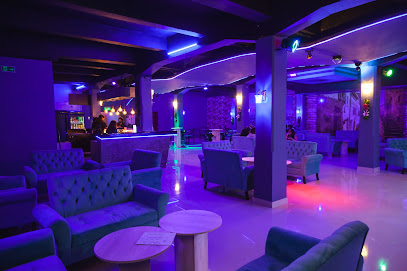
Entretiempo Restobar
Savor the best of local cuisine at Entretiempo Restobar, a charming gastropub in Coquimbo, Chile, offering a delightful dining experience.
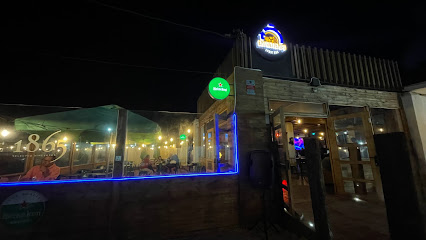
Olympus Restobar
Discover the vibrant flavors of Coquimbo at Olympus Restobar, where local ingredients meet culinary creativity in a cozy gastropub setting.
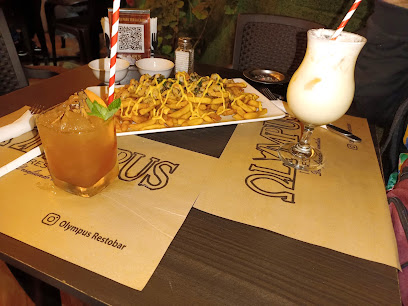
El Codigo Pirata
Experience the lively spirit of El Codigo Pirata, Coquimbo's premier pub and sports bar, where great food and camaraderie await.
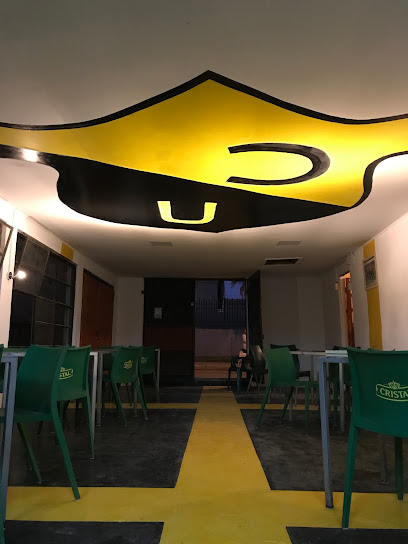
Local Phrases
-
- HelloHola
[oh-la] - GoodbyeAdiós
[ah-dee-ohs] - YesSí
[see] - NoNo
[no] - Please/You're welcomePor favor/De nada
[por fah-vor/de nah-dah] - Thank youGracias
[grah-see-ahs] - Excuse me/SorryPerdón
[pair-dohn] - How are you?¿Cómo estás?
[coh-moh es-tahs] - Fine. And you?Bien. ¿Y tú?
[bee-en. ee too] - Do you speak English?¿Hablas inglés?
[ah-blahs een-glays] - I don't understandNo entiendo
[noh en-tee-en-doh]
- HelloHola
-
- I'd like to see the menu, pleaseQuisiera ver el menú, por favor
[kee-see-ehr-ah ver el meh-noo, por fah-vor] - I don't eat meatNo como carne
[noh koh-moh kahr-neh] - Cheers!¡Salud!
[sah-lood] - I would like to pay, pleaseMe gustaría pagar, por favor
[meh goo-stah-ree-ah pah-gahr, por fah-vor]
- I'd like to see the menu, pleaseQuisiera ver el menú, por favor
-
- Help!¡Ayuda!
[ah-you-dah] - Go away!¡Vete!
[veh-teh] - Call the Police!¡Llama a la policía!
[yah-mah ah lah poh-lee-see-ah] - Call a doctor!¡Llama a un médico!
[yah-mah ah oon meh-dee-koh] - I'm lostEstoy perdido
[eh-stoy pair-dee-doh] - I'm illEstoy enfermo
[eh-stoy ehn-fehr-moh]
- Help!¡Ayuda!
-
- I'd like to buy...Me gustaría comprar...
[meh goo-stah-ree-ah kohm-prahr] - I'm just lookingSolo estoy mirando
[soh-loh eh-stoy mee-rahn-doh] - How much is it?¿Cuánto cuesta?
[kwan-toh kwehs-tah] - That's too expensiveEso es muy caro
[eh-soh ehs moo-ee kah-roh] - Can you lower the price?¿Puedes bajar el precio?
[pweh-dess bah-har el preh-see-oh]
- I'd like to buy...Me gustaría comprar...
-
- What time is it?¿Qué hora es?
[keh oh-rah es] - It's one o'clockEs la una
[ehs lah oo-nah] - Half past (10)Las diez y media
[lahs dee-ehs ee meh-dee-ah] - MorningMañana
[mah-nyah-nah] - AfternoonTarde
[tahr-deh] - EveningNoche
[noh-cheh] - YesterdayAyer
[ah-yehr] - TodayHoy
[oy] - TomorrowMañana
[mah-nyah-nah] - 1Uno
[oo-noh] - 2Dos
[dohs] - 3Tres
[trehs] - 4Cuatro
[kwah-troh] - 5Cinco
[seen-koh] - 6Seis
[says] - 7Siete
[syeh-teh] - 8Ocho
[oh-choh] - 9Nueve
[nweh-veh] - 10Diez
[dee-ehs]
- What time is it?¿Qué hora es?
-
- Where's a/the...?¿Dónde está...?
[dohn-deh ehs-tah] - What's the address?¿Cuál es la dirección?
[kwal ehs lah dee-rehk-syon] - Can you show me (on the map)?¿Puedes mostrarme (en el mapa)?
[pweh-dess mohs-trar-meh (ehn el mah-pah)] - When's the next (bus)?¿Cuándo es el próximo (bus)?
[kwan-doh ehs ehl proh-ksee-moh (boos)] - A ticket (to ....)Un boleto (a ....)
[oon boh-leh-toh (ah)]
- Where's a/the...?¿Dónde está...?
History of Coquimbo
-
Long before the arrival of Spanish explorers, the region that is now Coquimbo was inhabited by indigenous peoples, primarily the Diaguita. These early inhabitants were skilled in agriculture, fishing, and pottery, and they left behind a rich archaeological legacy, including petroglyphs and ancient settlements.
-
Coquimbo was officially founded by Spanish conquistadors in the mid-16th century. The natural harbor became an important point for maritime trade and military expeditions. During the colonial period, the port of Coquimbo served as a gateway for Spanish ships transporting goods, silver, and other valuable resources from the interior regions.
-
During the late 16th and 17th centuries, Coquimbo's strategic location made it a target for pirates and privateers. Notorious figures like Francis Drake and Bartholomew Sharp frequented the waters of Coquimbo, leaving a legacy of legendary pirate tales. The local population built fortifications to protect the harbor from these frequent attacks.
-
Coquimbo played a significant role during Chile's fight for independence from Spanish rule. After Chile achieved independence in 1818, Coquimbo began to grow rapidly. The discovery of silver in nearby areas, such as Chañarcillo, in the mid-19th century led to an economic boom, attracting miners, merchants, and immigrants from various parts of the world.
-
The construction of the railway line between Coquimbo and La Serena in the late 19th century further accelerated the city's growth. This new transportation link facilitated the export of minerals and agricultural products, establishing Coquimbo as a vital commercial hub in the region.
-
In the 20th century, Coquimbo continued to evolve, with significant investments in infrastructure, education, and tourism. The city became a popular destination for both domestic and international tourists, drawn by its beautiful beaches, historical sites, and cultural events. The construction of the Cross of the Third Millennium in 2001 symbolized Coquimbo's aspirations for the future while honoring its rich historical heritage.
-
Coquimbo is renowned for its vibrant cultural scene, with numerous festivals and traditions celebrated throughout the year. One of the most famous events is the 'Fiesta de La Pampilla,' held every September to commemorate Chile's Independence Day. This festival attracts thousands of visitors with its music, dance, food, and traditional games, showcasing the lively spirit and cultural diversity of Coquimbo.
Coquimbo Essentials
-
Coquimbo is located in the Coquimbo Region of Chile. The closest major airport is La Florida Airport in La Serena, which is about 15 kilometers from Coquimbo. From the airport, you can take a taxi, rental car, or a shuttle bus to Coquimbo. Alternatively, you can travel by bus from Santiago, which takes approximately 7 hours. The bus journey offers scenic views of the Chilean coastline and countryside.
-
Coquimbo is a relatively small city, and many attractions are within walking distance. For longer distances, local buses and colectivos (shared taxis) are affordable and convenient options. Taxis are also available and can be hailed on the street or booked through apps. Renting a car is another option, especially if you plan to explore the surrounding areas. Be aware that traffic can be heavy during peak hours.
-
The official currency in Chile is the Chilean Peso (CLP). Credit cards are widely accepted in hotels, restaurants, and larger shops, but it is advisable to carry some cash for smaller establishments and markets. ATMs are readily available throughout Coquimbo, and you can withdraw Chilean Pesos using international bank cards. Currency exchange services are also available at the airport and in the city.
-
Coquimbo is generally safe for tourists, but it is important to take standard precautions. Avoid walking alone at night, especially in poorly lit areas. Be cautious of pickpockets in crowded places such as markets and bus stations. Specific neighborhoods to be cautious in include Tierras Blancas and Parte Alta. Always keep an eye on your belongings and avoid displaying valuables.
-
In case of emergency, dial 133 for police assistance, 131 for medical emergencies, and 132 for fire services. The main hospital in Coquimbo is Hospital San Pablo, which provides a range of medical services. Pharmacies are also available for minor health issues. It is recommended to have travel insurance that covers medical emergencies. Keep a list of emergency contacts and the address of your accommodation handy.
-
Fashion: Do dress casually, but avoid wearing overly revealing clothing. In religious sites, opt for modest attire. Religion: Do respect local religious practices, especially if visiting churches. Public Transport: Do be polite and offer your seat to elderly passengers. Don't eat or drink on public transport. Greetings: Do greet people with a handshake. A friendly 'Hola' is common. Eating & Drinking: Do try local dishes like seafood and empanadas. Don't refuse food offerings, as it can be considered impolite.
-
To experience Coquimbo like a local, visit the local markets such as the Feria de Abastos, where you can buy fresh produce and seafood. Engage with locals at the Plaza de Armas, a central square often bustling with activity. Don't miss the Cruz del Tercer Milenio, a monumental cross offering panoramic views of the city. For a unique experience, take a boat tour to see the local marine life and enjoy the coastal scenery.
Trending Landmark in Coquimbo
-
Faro Monumental
-
La Recova
-
Cruz Del Tercer Milenio
-
Japonés La Serena Garden
-
Fuerte de Coquimbo
-
Plaza de Armas Coquimbo
-
PUEBLITO PEÑUELAS
-
Parque Nacional Fray Jorge
-
Centro Cultural Mohamed VI
-
Peñuelas
-
Playa La Herradura
-
Mirador Los Navegantes
-
Pichasca Natural Monument
-
Plaza Nobel Gabriela Mistral
-
Muelle Morgan
Nearby Cities to Coquimbo
-
Things To Do in La Serena
-
Things To Do in San Juan
-
Things To Do in Viña del Mar
-
Things To Do in Valparaíso
-
Things To Do in Santiago
-
Things To Do in Mendoza
-
Things To Do in Rancagua
-
Things To Do in Curicó
-
Things To Do in San Rafael
-
Things To Do in San Miguel de Tucumán
-
Things To Do in Córdoba
-
Things To Do in Antofagasta
-
Things To Do in Concepción
-
Things To Do in Salta
-
Things To Do in San Pedro de Atacama











